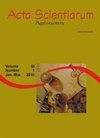How to write the discussion section of a scientific article
IF 1.2
4区 农林科学
Q3 AGRONOMY
引用次数: 6
Abstract
he Discussion is the hardest section of a scientific article to write, as cognitive skills must be used to properly contextualize the findings of a study. In this article, we guide scientific writers, particularly unexperienced ones, on how to structure a Discussion section based on an article by Docherty and Smith (1999). According to these authors, a discussion should be prepared by organizing information in the following order: (a) statement of principal findings; (b) strengths and weaknesses of the study; (c) strengths and weaknesses in relation to other studies, discussing particularly any differences in results; (d) meaning of the study: possible mechanisms and implications; and (e) unanswered questions and future research. Each component of this sequence is discussed in detail with examples drawn from the literature.如何写一篇科学文章的讨论部分
讨论是科学文章中最难写的部分,因为必须使用认知技能来适当地将研究结果置于背景中。在本文中,我们指导科学作家,特别是没有经验的人,如何根据Docherty和Smith(1999)的一篇文章构建讨论部分。这些作者认为,编写讨论时应按下列顺序组织资料:(a)主要调查结果说明;(b)研究的优点和缺点;(c)与其他研究相比的优势和劣势,特别讨论结果中的任何差异;(d)研究的意义:可能的机制和影响;(e)未解之谜和未来研究。该序列的每个组成部分都用文献中的例子进行了详细讨论。
本文章由计算机程序翻译,如有差异,请以英文原文为准。
求助全文
约1分钟内获得全文
求助全文
来源期刊

Acta Scientiarum. Agronomy.
Agricultural and Biological Sciences-Agronomy and Crop Science
CiteScore
2.40
自引率
0.00%
发文量
45
审稿时长
>12 weeks
期刊介绍:
The journal publishes original articles in all areas of Agronomy, including soil sciences, agricultural entomology, soil fertility and manuring, soil physics, physiology of cultivated plants, phytopathology, phyto-health, phytotechny, genesis, morphology and soil classification, management and conservation of soil, integrated management of plant pests, vegetal improvement, agricultural microbiology, agricultural parasitology, production and processing of seeds.
 求助内容:
求助内容: 应助结果提醒方式:
应助结果提醒方式:


